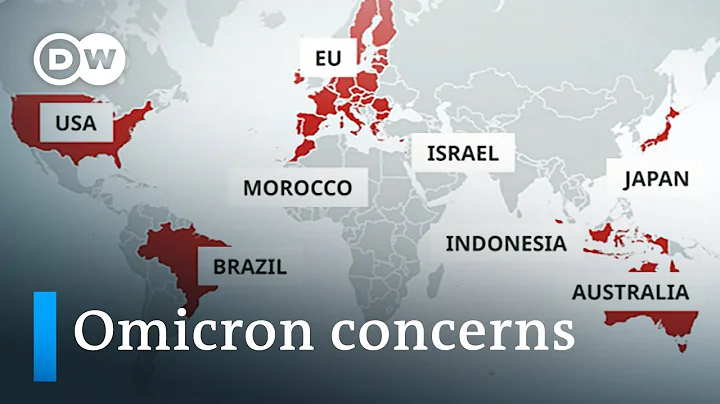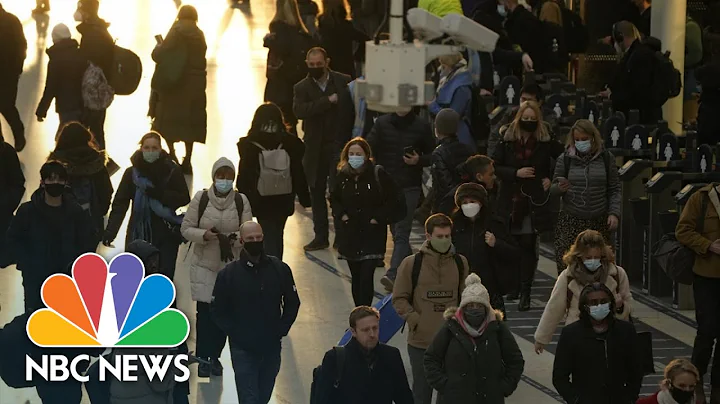The new coronavirus pandemic caused by the novel coronavirus SARS-CoV-2 has claimed many lives around the world. The epidemic has greatly affected social development and people's lives in the past few years. Moreover, the new coronavirus is still mutating continuously, from Delta to Omicron , and then to the emergence of sub-variants in Omicron. Subvariant of

Omicron After the Omicron variant (BA.1) was first discovered in South Africa in November 2021, it quickly spread around the world, surpassing other variants and quickly becoming the dominant variant in many countries, including the United States. . Since then, several lineages and sublineages have emerged. Additional Omicron variants, BA.4 and BA.5, have also emerged in South Africa and Europe and have been identified as lineage variants of concern by the World Health Organization. It seems that the COVID-19 epidemic still has no end in sight. So when will the COVID-19 pandemic end? Scientists have given an answer.

Screenshot of research article
According to scientists’ new model predictions, the new coronavirus pandemic will end in 2022. An article published in the Journal of Medical Virology states that many people are wondering when the COVID-19 pandemic will end and life will return to normal. The problem is very elusive and different predictions have been proposed. In this study, global mortality and case fatality rates of COVID-19 were analyzed using nonlinear regression . The analysis suggests that the COVID-19 pandemic may be over by 2022, but by 2023, COVID-19 could be twice or twice as lethal as seasonal influenza. The prediction takes into account the emergence of new SARS-CoV-2 variants and is supported by the characteristics of the Omicron variant and other facts. Because herd immunity against COVID-19, established through natural infection and mass vaccination, differs between countries, COVID-19 may be more deadly than predicted in some countries in the coming years. high or low.

What will be the future of the new coronavirus?
1. Total eradication of the virus
This is the hypothesis that everyone dreams of: that through our heroic efforts, Sars-CoV-2 will disappear from the face of the earth. This has already happened in the case of smallpox, which was declared eradicated by the World Health Organization in 1980. But it is extremely rare to completely eliminate the new coronavirus, and it is difficult to happen in the case of Covid-19. "In the history of major viruses such as measles or smallpox, infection with the disease conferred lifelong sterilizing immunity, that is, it prevented infection and transmission of the virus," which created herd immunity, with only newborns remaining susceptible become infected. " Vaccines against these diseases also make it possible to obtain this immunity. However, this is not the case with SARS-CoV-2, which can infect people who are already infected. Vaccines, while effective, do not completely prevent the spread of the virus.
& Unlike the smallpox virus , SARS-CoV-2 can also be transmitted to animals, according to a study published in the journal Science Therefore, these have been detected in minks, cats, tigers or lions. Animals (and possibly other animals) serve as reservoirs for the virus, and even if it is eradicated from the human species, it can continue to spread among humans, mutate, and may eventually reinfect humans.

2 Disease
Epidemiologists say a disease is endemic when it is stable or at least predictable in a given area, as is the case with seasonal influenza, but there is no consensus on what it takes to reach that benchmark. Under this broad definition, endemic does not necessarily mean that a disease is rare or common, mild or severe. For example, malaria is considered endemic but is endemic in dozens of countries. , mainly in sub-Saharan Africa, causing more than 600,000 deaths in 2020.
What are the main factors that will affect the epidemic in the future?
The main factors that will affect the end of the pandemic are the new variants that may appear in the future, and the need. The new new crown vaccine can prevent infection.This is because new variants may emerge over time, and the virus itself is constantly changing and developing new mutations. "Viruses evolve, and certainly SARS-CoV-2 has shown a pretty impressive ability to evolve over two years into the pandemic, and the world will likely continue to see new variants emerge as time goes on. The emergence of new variants It may also affect the effectiveness of the vaccine in preventing the virus and how long this protection lasts. The new coronavirus vaccine developed in humans was mainly targeting the original strain of SARS-CoV-2. As new changes occur in the future. The emergence of new strains of the virus may affect the effectiveness of the vaccine because the spike protein of the new variant may be very different from that of the original strain

and as the virus spreads among more people, it may become mutated. Developments provide more opportunities for the emergence of new variants. It is the number of infections occurring around the world that creates opportunities for the emergence of new variants, and the emergence of new variants may also affect the time when the epidemic ends. The sooner the spread of the global epidemic is resolved, the sooner the epidemic will end.
Finally, I hope that the new crown epidemic will end. People really can’t afford it. I am Huo Zongjun. See you in the next issue.





















